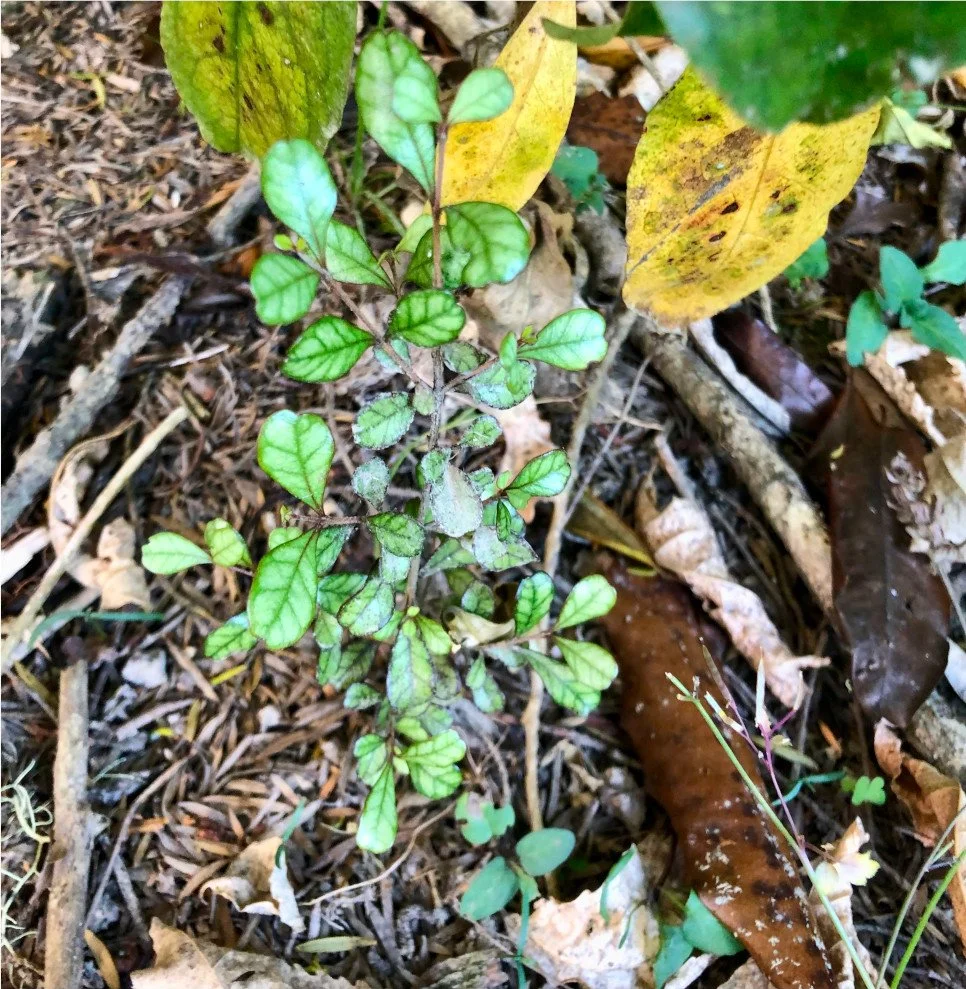Botanical name:
Lophomyrtus obcordata
Common name(s):
Rohutu
About:
A small shrub characterised by its very small, delicate, and fine bronze to red leaves, creating an elegant appearance. The bark of this shrub is mottled and smooth, displaying a unique mixture of colours, including patches of grey, cream, and a soft greenish-cream. This particular shrub features lovely white flowers adorned with numerous striking white stamens, and it produces fruit that ripens to an eye-catching bright or dark red, and in some cases, it even turns black. It is known to be a hardy species, making it an excellent choice for creating a beautiful hedge or an effective screen in various garden settings.
Natural habitat:
Coastal to montane in forest - though mostly found in coastal and lowland forested habitats. Lophomyrtus obcordata is often rather local over large parts of its North Island range though it seems to be reasonably common on the Pouto, Kaipara and Awhitu Peninsulas where it grows on stable sand dunes in a forest dominated by Kunzea amathicola (known as rawiritoa to northern Maori). Lophomyrtus obcordata is also occasionally dominant in alluvial forest remnants of the eastern South Island. In these places it is often parasitised by the dwarf mistletoe Korthalsella lindsayi.
Growing environment:
Frost, Sun & Free draining tolerant.
Endemic distribution:
New Zealand’s North and South Islands. Patchy and often absent over large parts of the country. More common in the eastern North and South island though locally prominent in some parts of western Northland and Auckland.
Height: 5m
Flowering:
November – March with a cream or white coloured flower/s
Fruiting:
January – May with red to black fruit.
Uses:
Bird food / Attractant, Bee food, Hedging & Riparian plantings.
How to grow:
Easily grown from fresh seed. Can also be grown from semi-hardwood and hardwood cuttings. Lophomyrtus obcordata is an attractive and remarkably hardy shrub that does well in a wide range of situations. of the two species in the genus, L. obcordata is more commonly grown and sold by nuseries though even then it is still surpassed in nurseries by the diversity of freakish forms and variegated mutants derived from the hybrid L. ×ralphii (L. bullata × L. obcordata). Myrtle rust (Austropuccinia psidii) however now poses a serious threat to this species both in the wild and in cultivation.
** Seed germinates without pre treatment. 4 weeks cold stratification will help speed this up though


